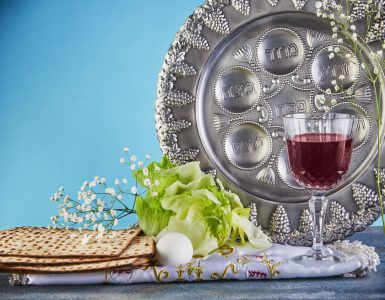Permanent Makeup for Cancer Patients
People have tattooed their bodies since ancient times for symbolic, ritual, or aesthetic purposes. It is well-known that tattoos are forbidden by the Torah. In recent years, a number of questions have arisen regarding tattoos performed for medical-aesthetic purposes. For example, cancer patients who have lost all of their hair due to chemotherapy or radiotherapy, including their eyebrows, may wish to have an eyebrow tattoo done. This is an invasive procedure during which a pigment is injected into the deepest layer of the dermis.
In this essay, we will briefly review the basic principles of the Issur of tattoos and then discuss this question in particular.
The source of the Issur is the Posuk, “u’Chesoves Ka’aka Lo Sitnu Bachem” – “You shall not place a tattoo upon yourselves” (Vayikra 19:28). The Rishonim explain that tattoos were a common practice of idol-worshippers as a symbol of their devotion and allegiance to their deity (Rambam, Hilchos Avoda Zara 12:11).
The Mishna in Makos (21a) rules:
A person who imprints a tattoo – if he applied the pigment but did not make an incision in the skin, or if he made an incision in the skin but did not apply the pigment – he is not liable unless he applies the pigment and makes an incision in the skin. The pigment must be with ink, K’chol (blue dye), or anything that leaves a permanent mark.
The Rambam (ibid.) elaborates:
Tattoos mentioned by the Torah are those in which a person makes an incision in his skin and fills the incision with K’chol or pigment or any other colored ink… Once a person leaves a mark using one of the dyes or pigments, having made an incision on any part of the body – whether the person is a man or woman – they are liable to lashes. If the person wrote on his skin but did not dye or dyed but did not write by cutting [the skin], he is exempt. [He is only liable if he] makes an incision in the skin and inserts the pigment, as the Posuk states, “u’Chesoves Ka’aka”.[1]
The insertion of the needle in contemporary tattooing is assumedly equivalent to the “Serita” (making an incision in the skin) mentioned by the Gemara and Rambam. Though it makes a puncture in the skin rather than an incision, since it draws blood, it should still be forbidden (Minchas Asher 2:56).
The Mishna in Makos (ibid.) records a Machlokes between R’ Shimon and the Chachamim regarding Kesoves Ka’aka. According to R’ Shimon, a person only violates this Issur if he tattoos the name of an Avoda Zara on his body, but according to the Chachamim, he is liable for any tattoo. The Shulchan Aruch (Y.D. 180:1), who does not stipulate that the tattoo be the name of an Avoda Zara, appears to rule like the Chachamim. In Beis Yosef he notes that this is the position of several Rishonim and appears to be the view of the Rambam.
The Rif cites the Gemara’s discussions regarding R’ Shimon’s position. Since the Rif generally does not cite discussions that are not Halachically relevant, the Ritva contends that the Rif must have held that the Halacha follows R’ Shimon. This is also the position of the Minchas Chinuch (Mitzva 253). The same argument can be made with regard to the Rosh (Makos 3:6) who also cites the Gemara’s discussion regarding R’ Shimon. However, it should be noted that this inference is not certain – in fact, the Aruch laNer contends that the Rif holds like the Chachamim.
Even if the Halacha is in accordance with the Chachamim, it is unclear whether the Issur includes all tattoos, or only those with letters. Several of the commentators on the Shulchan Aruch discuss this question as we will elaborate below.
Both R’ Ovadia Bartenura (Makos ibid.) and Ri miLunil (Ibid. 4b b’Dafey haRif) specifically mention letters when they define the Issur of Kesoves Ka’aka. This is also implied by the Sefer haChinuch (Mitzva 253) who mentions “K’sav” and “letters” several times.
In fact, the Chinuch states explicitly that a person is liable for tattooing “even one letter” onto his body. Unlike in Hilchos Shabbos, where a person only violates Meleches Kosev if he inscribes two letters (see the Rambam, Hilchos Shabbos 11:9) since that is comparable to the act of Kosev performed in the Mishkan, the Issur of Kesoves Ka’aka is violated by inscribing even one letter. This argument is made by the Me’il Tzedaka (31)[2] whose Teshuva on his topic has become one of the principal sources in this area of Halacha. We will examine a small portion of this Teshuva in the following paragraphs.
The Me’il Tzedaka begins by discussing the aforementioned question of whether a person is only liable for tattooing letters (that are regularly used, as opposed to symbols of a person’s own creation) or for any form of scratch or marking. He begins by noting that the Rambam and Shulchan Aruch do not stipulate that a person is only liable for tattooing letters. This clearly implies that they do not believe it to be necessary to violate the Issur.
He also adduces a very strong proof from the
ruling of the Gemara in Makos (ibid.) that a person may place ashes on
a wound without concern that it constitutes a tattoo because the wound clearly
indicates that he does not intend to create a tattoo. The ashes are almost
certainly not being applied in the form or shape of letters, yet the Gemara
needed to justify why it did not constitute a tattoo. This clearly implies that
the Issur is violated even without
inscribing letters.
This proof is cited by several of the Poskim. However, the Me’il Tzedaka concedes that there are two potential arguments against these proofs:
- The Gemara may only mean that there is an Issur d’Rabbanan to make a tattoo of any form. The Issur d’Oraisa, however, is only violated by tattooing letters.
- Perhaps the Gemara is discussing an unusual case in which the wound was in the shape of a letter!
There is an important Halachic difference between these two arguments. According to the first argument, there is an Issur d’Rabbanan to make any form of tattoo. According to the second argument, a tattoo that does not comprise K’sav would be permissible.
The Me’il Tzedaka explains that the Poskim who hold that one is only liable for tattooing letters likely base their contention on the word “Kesoves” which implies writing – i.e., letters. He also maintains that this is the position of the Rambam, for although, as stated, the Rambam’s ruling in Yad haChazaka does not imply that letters are necessary, in his Minyan haLavin in Hilchos Sanhedrin he lists this prohibition as “haKosev Kesoves Ka’aka”. The extra word “haKosev” implies that specifically “K’sav” is necessary.
The above is only based on inferences from the Rishonim. However, there are two Rishonim who state explicitly that letters are not a necessary component of Kesoves Ka’aka. The Ra’avad (in his commentary to Toras Kohanim, Kedoshim 6) states, “There is no need for inscribing letters – any marking that he makes is considered Kesoves Ka’aka.” The Rash miShantz (ibid.) similarly states, “It is called Kesoves even if he doesn’t inscribe letters.”
The Minchas Chinuch (ibid.) contends that the Rambam also holds like the Ra’avad and Rash miShantz. However, he cites the Sefer Yad haKetana who maintains that it is still necessary to create a marking that carries some meaning. He also cites the Mishnas Chachamim who states that there must be “a complete letter or complete marking, but there is no reason to hold him liable for making a mere scratch”. However, the Minchas Chinuch himself rules stringently in this matter. The same is implied by the Aruch laNer.
Thus far, there are two reasons to rule leniently with regard to eyebrow tattoos:
- R’ Shimon holds that the prohibition is only to tattoo the name of an Avoda Zara. However, as discussed, the Rambam and Shulchan Aruch do not rule like R’ Shimon. Moreover, the contention that the Rif and Rosh do rule like him is unclear. (We should also point out that the Tur (the son of the Rosh) also seems to rule like the Chachamim.)
- Some hold that even the Chachamim agree that a person only violates Kesoves Ka’aka if he tattoos letters. Making another type of marking may only be an Issur d’Rabbanan – or even permissible. However, as mentioned, this contention is not based on explicit statements by the Rishonim, whereas the opposite position is clearly implied by the Gemara in Makos and stated explicitly by two Rishonim.
Given that both of these arguments have some obvious weaknesses, it is difficult to be lenient based on these alone, although there are some who argue that these reasons are sufficient basis to permit it. There may, however, be another reason to permit it.
The Shulchan Aruch (ibid. 4) cites a ruling from the Tosefta (Makos 3) that a person may tattoo his slave to prevent him from escaping. The Maharam Chaviv (Get Pashut, cited by R’ Ezra Batzri, Techumin 10) explains:
The Torah only holds a person liable when he makes a tattoo for the purposes of the Kesiva itself, as the idol-worshippers did for their rituals. But for tattooing his slave so that he won’t escape he is exempt, as it is akin to a Melacha sheEina Tzricha l’Gufa or Davar sheEino Miskaven for which one is exempt with regard to Shabbos. Here too, by making a stamp on his slave so that he won’t escape, the intention of the stamp is not for the sake of the Kesoves Ka’aka itself, but for the securing of the slave, so that he won’t escape.
In short, where the intention is not for the tattoo itself but to serve some other need, it is permissible. This is the position of the Shulchan Aruch. However, the Rema (ibid.) rules that it is Asur Lechatchila. The Gra explains:
For it is no better than placing ashes on a wound. Even Rav Ashi only permitted it because his wound [indicates that it is not a tattoo]. See Tosfos to Gitin 20b s.v. “b’Chesoves” etc.
In other words, in the case in which a person places ashes on a wound, the purpose is not to form a tattoo. Nevertheless, it would have been prohibited if it wasn’t for the fact that the wound indicates that he does not mean to make a tattoo.
We may derive two principles from the Gra’s comment:
First, the Issur discussed by the Gemara in the case of placing ashes on a wound was an Issur d’Rabbanan (as the Me’il Tzedaka wrote in his first answer, above). This is why the Gra points to a Tosfos in Gitin which states:
However this is an Issur d’Rabbanan here. For it is even forbidden to place ashes on a wound because it appears like a Kesoves Ka’aka.
Second, according to the Rema, tattooing a slave is Asur Lechatchila, but placing ashes on a wound is permissible. The reason for this is that the Issur d’Rabbanan in question is based on whether the wound “appears like a Kesoves Ka’aka”. Placing ashes on a wound is permissible because the wound indicates that it isn’t a Kesoves Ka’aka. However, in the case of tattooing a slave, the tattoo does appear like a Kesoves Ka’aka – just that the owner does not intend to make a tattoo for its own sake. This is comparable, as the Maharam Chaviv explains, to a Davar sheEino Miskavein, and remains an Issur d’Rabbanan.
In light of this distinction, we may posit that the same should apply to an eyebrow tattoo for a cancer patient. The patient’s intention is certainly not to have a tattoo for its own sake, and its appearance clearly indicates that it isn’t intended to be a regular tattoo – just like the case of placing ashes on a wound.[3]
HaGaon Rav Asher Weiss Shlit”a (Minchas Asher 2:56) discusses the question of whether permanent makeup for grooming purposes is considered Kesoves Ka’aka. He opens by citing the discussion among the Poskim as to whether impermanent writing can constitute Kesoves Ka’aka, and notes that no proof can be adduced from the fact that the Shulchan Aruch does not discuss this question, because it was a given that the tattoos under discussion would last a long time. He contends that where it is clear that it is applied for aesthetic purposes and it is impermanent, we may consider added factors to permit it (which he details there). He concludes that it is permissible in cases of great need.
It seems likely that our case is considered a
case of “great need”, as we have written.
[1] The Rambam explains that the word “u’Chesoves” refers to the puncturing of the skin and “Ka’aka” refers to the insertion of the pigment. Other Mefarshim are of the opposite view (see, for example, Rashi’s comments ad. loc.)
[2] R’ Yona Landsofer zt”l (1678-1712), who was one of the Chachamim of Prague and Gedolei haDor despite passing away at the age of 34.
[3] R’ Ezra Batzri adds another reason to be lenient in this case – Kavod haBriyos – which can sometimes be used to waive Issurei d’Rabbanan. We should also add that emotional support is also an important factor for those undergoing difficult treatments for serious illnesses. Maintaining a “normal” physical appearance is important to ensure they don’t become broken-spirited.














